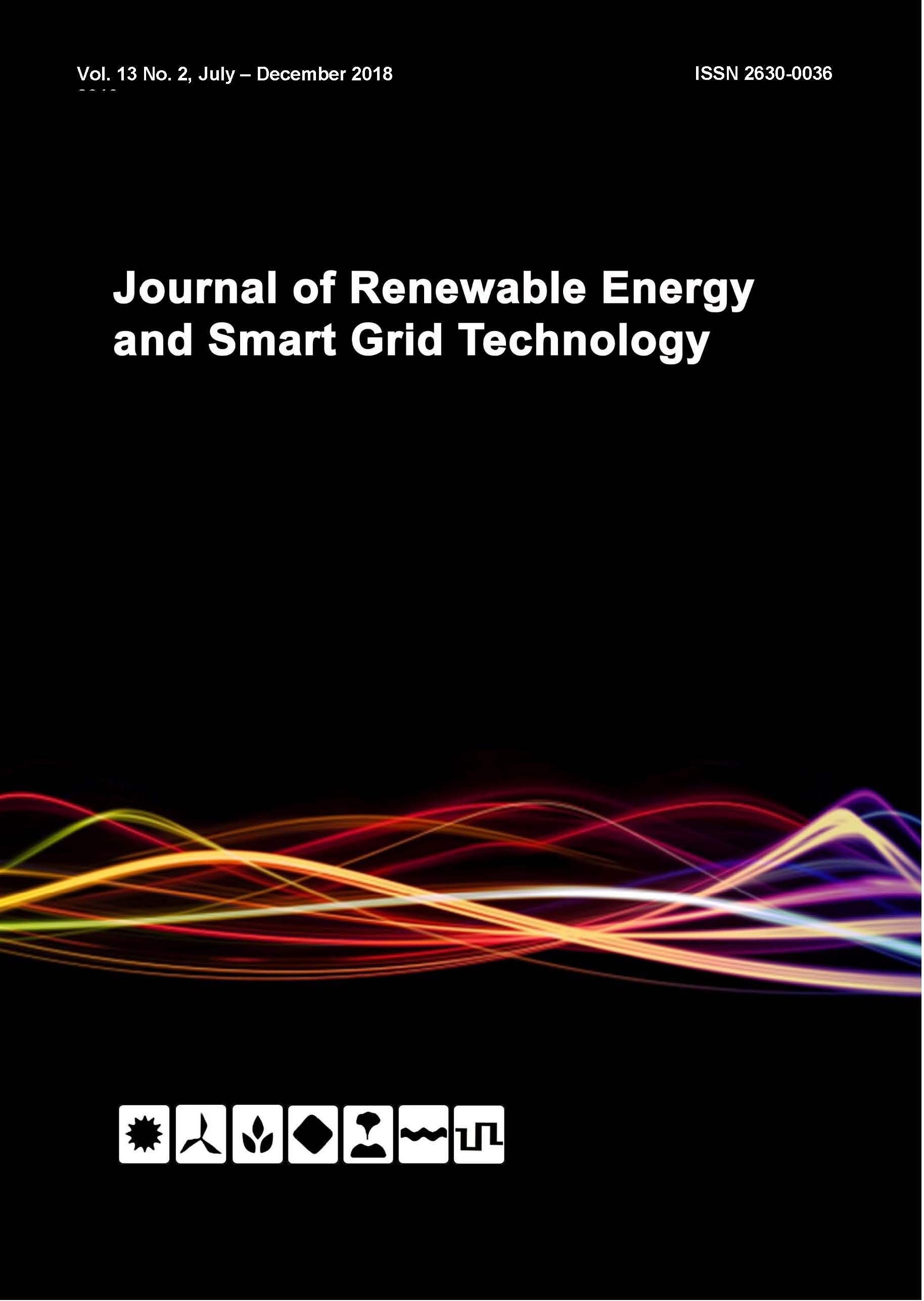Experimental co-digestion of carbon rich source and earthworm bedding wastewater to improve Bio-methane potential using experimental design
Keywords:
Earthworm bedding wastewater, Corncob, Corn husk, Co-digestion, Response surface methodologyAbstract
Corncob and corn husk are a rich source of carbon content. The added high nutrients as carbon content to the anaerobic digestion of nitrogen-rich earthworm bedding wastewater could establish positive synergism for efficient methane production. The experimental results showed that the model had significant (p < 0.05) with R2 value of 0.989. The maximum Bio-methane potential of 26.91% with methane content of 83% was obtained at the optimum conditions of 12% of TS of substrate and 50:50 of corncob to corn husk ratio. Structure analysis by X-ray diffraction (XRD) showed that the cellulose structure of substrate was destroyed and changed. The destruction of the fiber structure on the surface of corncob and corn husk after digestion was found to be clearly by SEM. The results confirmed that RSM technique with a central composite design were useful tools for optimizing the Bio-methane potential from co-digestion.
References
Panwar, N.L., Kothari, R, and Tyagi, V.V. (2012). Thermo chemical conversion of biomass-Eco friendly energy routes. Renewable and Sustainable Energy Reviews, Vol. 16, pp. 1801-1816.
Liu, K., Lin, X.H., Yue, J., Li, X.Z., Fang, X., Zhu, M.T., Lin, J., Qu, Y. and Xiao, L. (2010). High concentration ethanol production from corncob residues by fed-batch strategy. Bioresource Technology, Vol. 101, pp. 4952-4958.
Rajendra, S., Amrit, B.K. and Jagan, N.S. (2008). Production of biogas from poultry waste, International Journal of Renewable Energy, Vol. 3(1), pp. 1-20.
Chandran, B., Nigam, P. and Robinson, T. (2002). Removal of dyes from an artificial textile dye effluent by two agricultural waste residues, corncob and barley husk. Environment International, Vol. 28, pp. 29-33.
Tseng, R.L. and Tseng, S.K. (2005). Pore structure and adsorption performance of the KOH-activated carbons prepared from corncob. Journal of Colloid and Interface Science, Vol. 287, pp. 428-437.
Charles, A.M., Akwasi, A.B., Neil, M.G., Isabel, M.L. , David, A.L. and Kevin, B.H. (2010). Bio-oil and bio-char production from corn cobs and stover by fast pyrolysis. Biomass Bioenergy, Vol. 34, pp. 67-74.
Worasuwannarak, N., Sonobe, T. and Tanthapanichakoon, W. (2007).Pyrolysis behaviors of rice straw, rice husk, and corncob by TG-MS technique. Journal of Analytical and Applied Pyrolysis, Vol. 78, pp. 265-271.
Ming, C., Liming, X. and Peijian, X. (2007). Enzymatic hydrolysis of corncob and ethanol production from cellulosic hydrolysate. International Biodeterioratio and Biodegradation, Vol. 59, pp. 85-89.
Wu, L., Qing, L., Longyu, Z., Yuanyuan, W., Jibin, Z., Ziniu, Y. and Yanlin, Z. (2015). Potential biodiesel and biogas production from corncob by anaerobic fermentation and black soldier fly. Bioresource Technology, Vol. 194, pp. 276-282.
Ann, C., Wilkie, P.H.S. and Bordeaux, F.M. (2004). An economical bioreactor for evaluating biogas potentialof particulate biomass. Bioresource Technology, Vol. 92, pp. 103-109.
Angelidaki, I. and Ellegaard, L. (2002). Anaerobic digestion in Denmark: Past, present and future, In: Anaerobic digestion for sustainability in waste (water) treatment and reuse. Proceedings of 7th FAO/SREN-Workshop, Moscow, Russia.
Kaparaju, P. and Jukka, R. (2005). Anaerobic co-digestion of potato tuber and its industrial byproducts with pig manure. Resources Conservation and Recycling, Vol. 43, pp. 175-188.
Speece, R.E. (1996). Anaerobic biotechnology for industrial wastewaters. Nashville Tenn Archae Press, Chicago, pp. 749-751.
A.O.A.C. (2000). Official Method of Analysis of AOAC International, 17th ed. The Association of Official Analytical Chemists, Virginia.
Tengku, R.T.Y., Hasfalina, C.M., Nor, A.A.R. and Halimatun, S.H. (2014). Optimization of methane gas production from co-digestion of food waste and poultry manure using artificial neural network and response surface methodology. The Journal of Agricultural Science. Vol. 6, pp. 27-37.
Susmita, M. and Srinivas, T. (2015). Effect of operational parameters on biogas production using tomato waste as substrate and cow dung as inoculating medium, International Journal of Science and Research, Vol. 4(5), pp. 148 – 152.
Chen, X. Yan, W., Sheng, K. and Sanati, M. (2014). Comparison of high-solids to liquid anaerobic co-digestion of food waste and green waste. Bioresource Technology, Vol. 154, pp. 215-221.
Li, H.L., Deng, A.J., Ren, J.L., Liu, C.Y., Lu, Q., Zhong, L.J., Peng, F. and Sun, R.C. (2014). Catalytic hydrothermal pretreatment of corncob into xylose and furfural via solid acid catalyst. Bioresource Technology, Vol. 158, pp. 313-320.
Guangyin, C., Zheng, Z., Shiguan, Y., Caixia, F., Xingxing, Z. and Yan, L. (2010). Experimental co-digestion of corn stalk and vermicompost to improve biogas production. Waste Management, Vol. 30, pp. 1834-1840.
Downloads
Published
How to Cite
Issue
Section
License
All copyrights of the above manuscript, including rights to publish in any media, are transferred to the SGtech.
The authors retain the following rights;
1. All proprietary rights other than copyright.
2. Re-use of all or part of the above manuscript in their work.
3. Reproduction of the above manuscript for author’s personal use or for company/institution use provided that
(a) prior permission of SGtech is obtained,
(b) the source and SGtech copyright notice are indicated, and
(c) the copies are not offered for sale.



